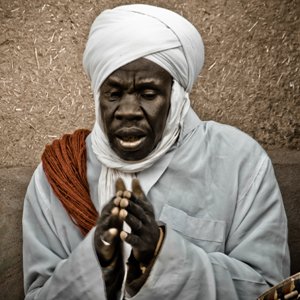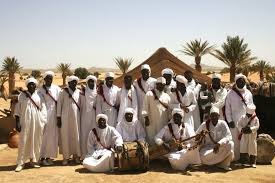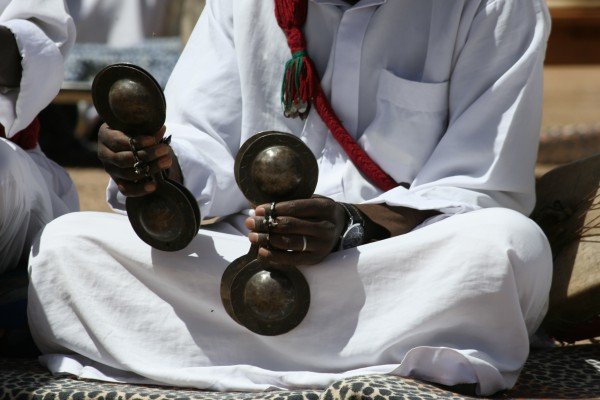The gnawa music and ritual in Morocco
The word gnawa refers to:
- On the one hand, an ethnic minority and members of the mystical Muslim brotherhoods of sub-Saharan origin that induce a musical trance as therapy to heal diseases.
The original gnawa were black and descendants of black slaves brought from sub-Saharan Africa. Today they are very mixed, being able to find gnawa Arabs or Berbers.
In Morocco, in some areas you can still find some people represented mostly by inhabitants of that ethnic group, as is the case of Khamlia. - Gnawa also makes reference to the ritual carried out using music to induce the trance through which the person will be healed. There are, however, different types of rituals and ways of practicing them according to the area and the brotherhood.
- Finally, gnawa is also the type of music that emerged from this practice, disconnected from the trance ritual, but with a total influence by the instruments used and the rhythms.
Origin of the word gnawa
For a long time, the only studies on the etymological origin of the word "gnawa" indicated that it came from the word "Ghana", a country from which the slaves were thought to have come. But this is not entirely true, since the slaves were originally from different regions, now countries like Senegal, Gambia, Mali, Ghana, Guinea, etc, a region called Bilad Al Sudan (which has nothing to do with the current Sudan)
Philologists claim that the term is semantically linked to the word "ignawen" / "Ignaw", which in the Tamazight language of the Sus region (Tasusit) comes to mean "dumb":
It is believed that when the first slaves arrived in Morocco, they spoke languages so unknown and incompressible to the autochthonous population that they defined them as "mute".
For a long time, blacks in general were designated in this way.
The instruments
In both gnawa and ritual music, 3 basic instruments are used:
- The guembri (in Arabic) or hajhouj (in Tamazight), a kind of 3-string lute made of goatskin.
- The qraqb (in Arabic) or iqrkashen (in Tamazight), castanets or metallic rattles in the shape of "8"
- And the tbel (Arabic) gnga and tgngat (tamazight), are 2 drums, one larger than the other, which are played by beating them with a wooden stick. They are also made by hand with goatskin and wood. (Some brotherhoods use only one)
The ritual
During the time I have lived and traveled through Morocco I have been discovering and hearing about different ways of practicing the gnawa ritual to induce trance. Until today, I continue to investigate on my own about the different ways of playing this music, and there are many isolated corners of the country of which hardly anything is known and have their particular way of doing it, although sharing many common patterns.
Some brotherhoods place special emphasis on the sound of castanets and drums to induce trance, while others give more importance to hajhouj (lute) and iqrkashen (castanets)
Just as some confraternities dress in colorful clothes and ornaments based on cauris, others choose less casual outfits, white djellabas, turbans of the same color, and red bands based on ropes tied with knots.
.
The most important ceremony is called Lila, although it is not practiced in the same way, nor is it the only way of healing.
The lila is a ritual linked to the power of the jinn (or spirits) and during the course of it is carried out a ritual of possession (not exorcism) and call of the jinn, through the trance induced with the instruments and gnawa rhythms in the hands of Maalem and his group of musicians and directed by the Muqadem and / or Muqadema.
In this ceremony only hajhouj and iqrkashen are used.
In general terms, it is believed that Gnawa musicians can heal. As this belief had to coexist with the religion they profess in Morocco, Islam, it is said that they really heal by divine grace. That is, Allah transmits the Baraka, which in turn they can transmit through their music to the sick person.
Each jinn has a strength and is associated with a specific color, which is why each trance can vary in its intensity or even aggressiveness.
The musicians play different rhythms with their instruments, since each trance is also associated with a different rhythm. Once achieved, they must maintain the rhythm until the possessed person leaves it.
The group has to help and facilitate the entire trance, from the moment it enters until it leaves.
There are Lilacs in which some participants in trance come to harm themselves without getting to feel pain due to the state of abstraction in which they are.
Others, however, and so I have witnessed them on many occasions, are much less aggressive, the person who goes into a trance begins to dance with repetitive movements, such as spasms, which progressively accelerate, until it falls to the ground.
The "ajdab" (person in trance) is helped to get up, and usually feels relaxed and unblocked. Or released from some repressed feeling.
Trance is used to cure diseases, especially of the mind.
Although others believe that it can serve to unlock repressed feelings.
I am sure, and although it is my personal opinion, it is what I have been able to observe in the years that I have been in contact with the gnawa music and ritual, and in coexistence with one of the cofradias, that it is so, since in a society in which pain and certain feelings are usually repressed, in which people tend not to complain about anything and ensure that "everything is fine" even if it is not so, it is not surprising that in a Lila or any other ritual , with the music playing repetitively over and over again, the vibration of the castanets, the rumble of the tambos, you can feel a state of trance and liberation in which you do not want anything other than to let yourself go, having an excuse for it, and take out everything that was becoming entrenched within oneself.
The letters gnawa
Songs of gnawa music are sung in different languages. This is another example of reminiscences as old as it may be.
Although it is usual to generalize and say that the Bambara language is the original language of sub-Saharan slaves, the truth is that they have found songs in other languages such as Hausa (spoken by tribes of Niger and Nigeria), and some Mandé languages (as is Mandinga and Bambara) or Fulani, which comprises many different regions of sub-Saharan Africa.
Although most of the songs that are sung today are in Arabic, many still have words in the original languages, sometimes badly pronounced due to the degradation of time and the lack of written record of many of them.
They usually speak of the god and the prophet, of Bilal, the first freed slave who became muhecin (the one who calls to prayer), of Lalla Mimouna and other important characters for the gnawa.
With their letters they ask and praise the god (lahfo a mulana: liberanos sir), leaving a record of the suffering experienced. In many others they speak of their land: Bilad Al Sudan, from which they ripped them in a forced march, and the longing they feel towards it.
The current gnawa music
At first the gnawa (members of the brotherhoods), their ceremonies and their music were not very well received and society in general did not accept them. There were many prejudices towards them and they were branded as non-Muslims, alluding to black magic. Little by little they were gaining recognition and acceptance of Moroccan society.
Nowadays, ganawa music is still practiced as a ritual, and many Moroccans are adept at these practices that are part of the Sufi branch of religion.
Gnawa music is part of the folklore of the country and has been internationalized thanks to recognized artists in the western music scene.
From the traditional rhythms and lyrics arise new rhythms and modern lyrics also fused with other musical styles.
Adapted to another type of public, detached from the healing ritual, far from the mystical-religious, and with lyrics of diverse themes, gnawa music makes its way abroad, far from its roots but with an origin and a history that we should not forget.


